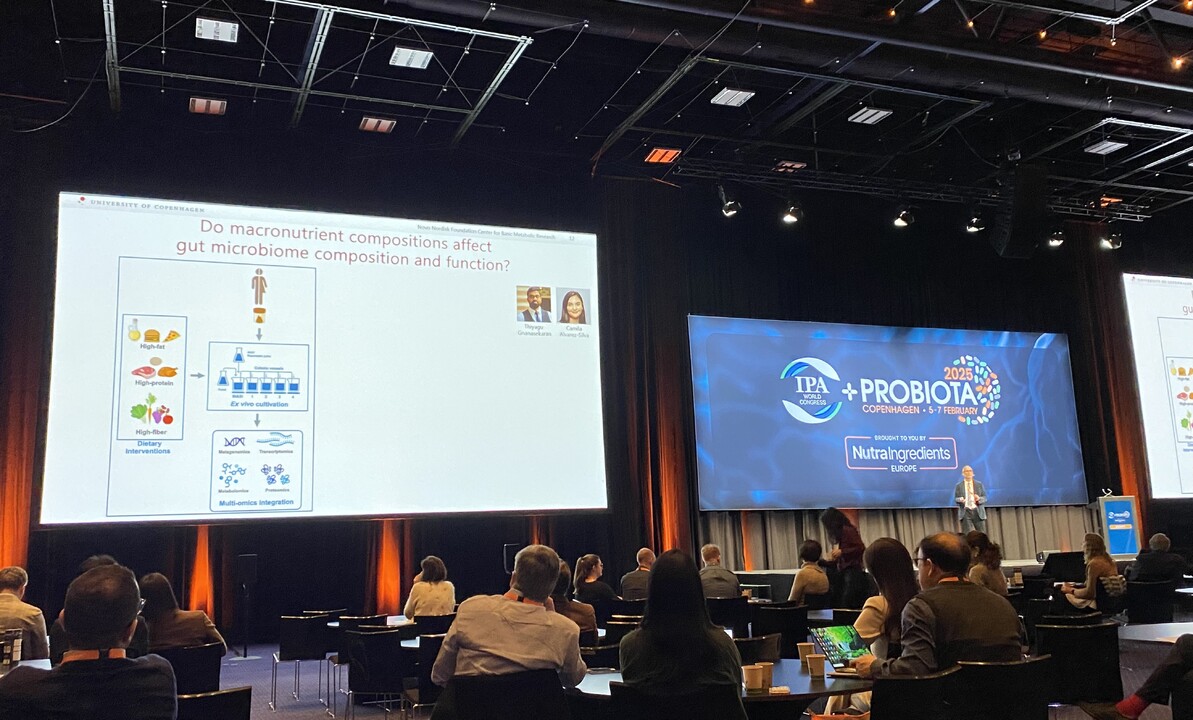
Recent Posts:

Written By
Massimo Marzorati
(CEO)
Key reflections from Probiota 2025 in Copenhagen
Copenhagen has always been one of my most favourite cities in the world – sprinkle in three days of all things microbiome and you’ve caught me in my happy place! I’m talking about none other than the IPA World Congress + Probiota 2025, the leading microbiome industry event organized by NutraIngredients, that just wrapped up earlier this month. Although everyone swarms towards the Little Mermaid when in Copenhagen, in the first week of February it was Probiota that made waves and brought in a sea of microbiome experts.
Growing awareness of the Gut-Brain connection
The first day opened with a series of insightful talks on the microbiota-gut-brain axis. With sessions conducted by award-winning scientists such as Dr. Siobhain O’Mahony and Dr. Louis Koeninger, it has been interesting to see how the industry is evolving. As research advances, our sector is shifting towards a better understanding of how microbes influence brain health—not just in managing stress, but also in optimizing sleep quality and enhancing overall energy levels. This shift reflects a deeper, science-driven understanding of the microbiome’s role in holistic well-being.
This growing awareness and innovation are not just gaining traction within the scientific community—they’re also resonating with everyday consumers. A study done by Innova Market Insights discovered that two out of three consumers now acknowledge gut health as critical to their overall welfare.
AI is accelerating gut and microbiome research
As we progress and continue to unlock the mysteries of the gut, so does the need for more advanced tools to analyse its complexities. Fortunately, we live in a time where innovation and technology are synonymous, and AI has quickly become an effective instrument in expediting data discoveries and analysis.
Another powerful application is how AI is accelerating the development of microbiome-based therapies, including next-generation probiotics designed to target specific microbial imbalances. These AI-driven treatments could play a role in managing a wide range of conditions, from digestive disorders to metabolic diseases. Despite all this, we must take into account ethical considerations to ensure data privacy, algorithmic bias and access for all. It was enlightening to hear experts addressing this and share diverse ideas on how to potentially resolve it.
Increasing interest on athletic performance and the microbiome
I have and will always remain a champion of using science as a bridge between research and real-world applications. Did you know that studies show how the microbiome of high-level athletes is different from that of individuals with a sedentary lifestyle? It’s incredible how their gut composition and physiological metabolism vary! Researchers are now investigating whether these differences contribute to enhanced endurance, faster recovery, and greater strength—and if so, how we can apply these insights more widely. This question was at the heart of discussions at Probiota, where experts explored how prebiotics, probiotics, and postbiotics could be used to modulate the microbiome for improved athletic performance and recovery—not just for elite athletes but for anyone looking to optimize their fitness. While studies have identified unique microbial signatures in top-performing athletes, the findings remain inconclusive, emphasizing the need for further research. Understanding how gut bacteria adapt to different training styles could open the door to microbiome-based interventions designed to optimize performance and recovery.
Some additional key insights from Probiota
The discussion around postbiotics, especially, caught my attention. The International Probiotic Association (IPA Europe) presented its road to pin down and work around a clear definition of postbiotics and how these fit into food and nutritional supplements.
Another significant mention must go to Professor Mani Arumugam, who highlighted his research conducted with our SHIME technology platform. His presentation stressed the principal features of the technology, namely allowing interventions that would have no ethical complications and controlled and reproducible studies. He also referred to how multi-omics data from an active microbiome enthused more insight than conventional fecal microbiome analysis. Thanks to periodic longitudinal sampling, the SHIME system grants researchers the capacity to track the dynamics of microbiota over time and host-independent effects
Dr. Jeremy Burton‘s session was equally enticing. He unveiled the idea of the “pantryome,” in other words, how microbes work together developing interconnected and interdependent electron transport chains, sharing critical nutrients such as vitamins and amino acids. What caught my attention was the concept of this mutuality between microorganisms that is critical to supports microbiome function and its multifunctional effects on host physiology
Finally, I really enjoyed the presentation by Dr. Sean Gibbons on gut health in relation to age. The research indicted the challenges that emerged when our gut microbiome composition gradually changes with age and how these changes adversely affect health and longevity. Equally interesting is that older people with the more unique or diverse gut microbiomes experienced better health outcomes. To think of it, that the types of bacteria living in our digestive tract influence everything from metabolic health to how we respond to drugs such as statins, is pretty amazing!
These are just a few of my own personal reflections that I thought to share. Walking away from Probiota, one thing is clear to me. Although I’ve been in this industry for the past twenty years and have worked with top experts, I love that I keep learning something new everyday, especially at conferences like these. Until next time- looking forward to what lies ahead!
Recent Posts:

Written By
Massimo Marzorati
(CEO)

